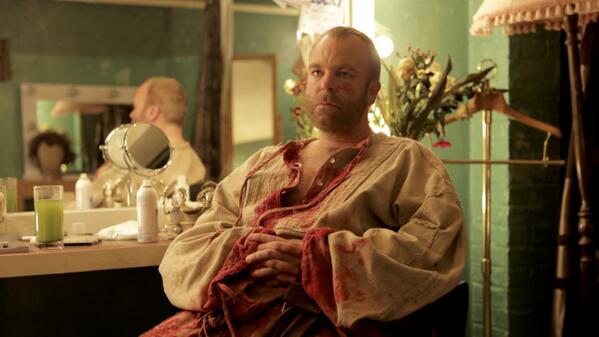TV review: Inside No. 9 – ‘The Understudy’

The penultimate episode of Inside No. 9 sees a return to the gloomier corners of Steve Pemberton and Reece Shearsmith’s world, as we are dropped into a dingy West End dressing room, where a production of Macbeth is in full swing.
Dressing room number nine is home to the play’s leading man is Tony Warner (Pemberton), an ill-tempered, disingenuous luvvie, constantly infuriated by everyone around him, including browbeaten costume lady Kirsty, and his unseen co-star (he was in Doc Martin, you know).
Lurking in Tony’s shadow is compliant understudy Jim (Shearsmith). Forever the bridesmaid, Jim is belittled by his colleagues and berated by his bloodily ruthless girlfriend, who urges him to be more ambitious.
Parallels between the plot of Macbeth and the lives of its cast and crew begin to seep through the fabric of the episode early, but anyone who thinks they have it sussed out, are forgetting who they were dealing with.
Skewering the trying and often less-than-glamorous world of theatre, The Understudy is full of weighty tragedy and littered with acidly funny, laugh-out-loud lines. Not a single breath here is wasted; with such a diminutive space in which to tell a story, every line, every look must count, and it does.
Foreshadowing and misdirection come into play, and we watch in horror as the characters’ inevitable and respective falls are played out on the episode’s murky stage, in what proves almost a warped mirror image of earlier episode Tom and Gerri.
Though there’s heaps of drama, betrayal and calamity afoot, the pair further demonstrate their knack for the trivia of conversation; as fanciful and monstrous as their work often is, they have the small, agonising details of the human condition whittled to a tee.
While Julia Davis, as a joyless, militant company director comes close, this week it’s Pemberton that steals the show with his blustery, vodka-addled turn as unbearable egomaniac Tony Warner.
It’s a credit to all involved that, though we’re only behind this particular door for thirty minutes, it’s distressing to see Jim transform from weak-willed nice guy into an odious specter of his former mentor.
The Understudy, and the series overall, is a big two-fingers to television executives that believe anthology shows fail to engage audiences, due to the short episodes, illustrating that it’s quality of material, not quantity, that matters.



































